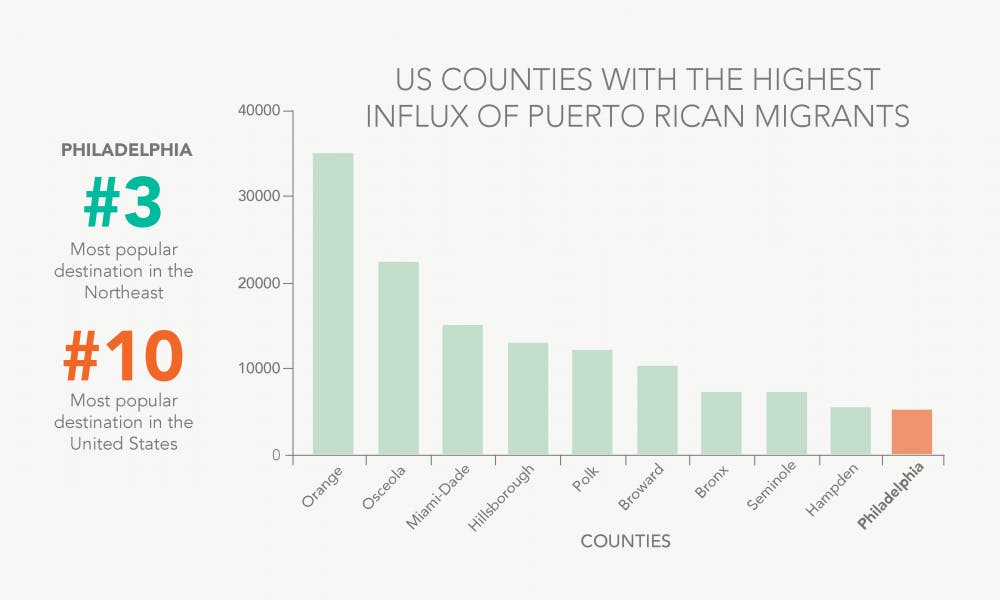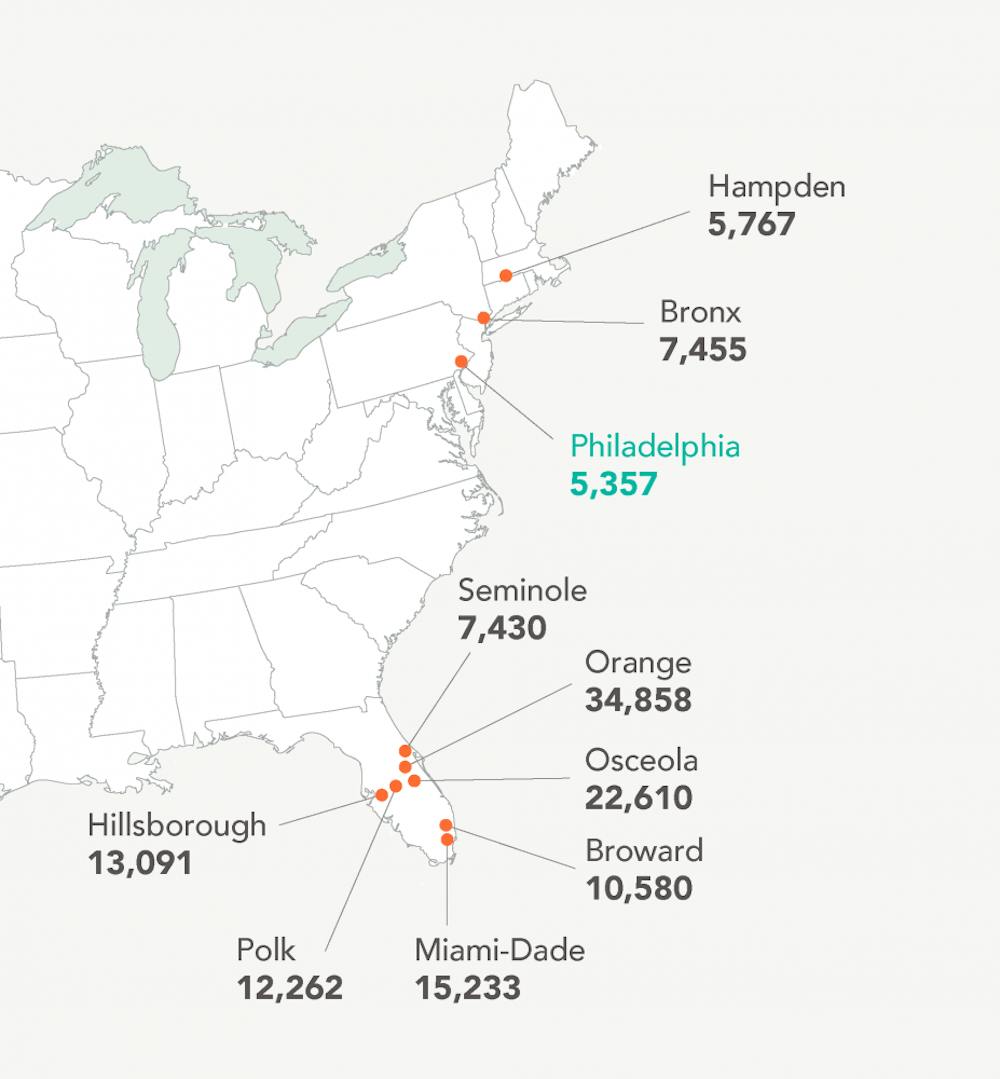
In the wake of Hurricane Maria, nearly 400,000 Puerto Rican residents evacuated the island. 5,357 evacuees arrived in Philadelphia County — more than any other metropolitan area outside of Florida, the Bronx, and Massachusetts. They slept on relatives’ couches, checked into hotels, or established permanent residences throughout Philadelphia, University of Pennsylvania researchers said.
Last fall semester, 45 second-year master’s students in Penn School of Design's City and Regional Planning department spent months evaluating Philadelphia’s response to the diaspora and found numerous government shortcomings.
The PennDesign students and professors traveled to Puerto Rico from Sep. 29 to Oct. 7, where they collaborated with local municipalities in order to prepare for future natural disasters on the island. In addition, the group advised Philadelphia legislators and analyzed how Philadelphia can provide better housing and aid to its new residents, receive appropriate federal funding, and ease the cultural transition of Puerto Rican natives.
The project culminated in presentations in December 2018 in Philadelphia, attended by Puerto Rican politicians and Philadelphia legislators, which concluded that the city needed to streamline the way it collected data on migrants and provide tax incentives for Puerto Rican people living in Philadelphia to send money home.
Ariel Vazquez, a PennDesign professor who led his students in a study of the effects of Puerto Ricans entering the continental United States, said Philadelphia's response to the mass migration should have been more proactive.
“Once we went to Puerto Rico and we came back, we looked at how Philadelphia didn’t really have a strategy for people coming in," he said. "We didn’t see funding.”

Students also presented work placement initiatives to help Puerto Ricans re-enter the job market, Vazquez said.
“When people are coming to Philadelphia from Puerto Rico, these situations might be different, said Alex Krefetz, a second-year master’s student in city and regional planning. "In some cases, there are things we can adapt in our plans to meet the needs of evacuees here in a way that they’re comfortable and familiar with.”
Krefetz said there is also a shortage of informative data on where Puerto Ricans are going and staying after Hurricane Maria. Despite some U.S. Census Bureau counts, Krefetz said most publicly known numbers on the post-Maria immigration to the continental United States were driven by second-hand estimates, such as enrollment in the public school system, which is not a dependable or comprehensive measure.
Citylab reported that neither state nor federal institutions kept track of how many Puerto Ricans left or returned following the devastation of the territory.
Despite the mass influx of Puerto Rican residents to Philadelphia, Krefetz said the city did not receive appropriate amounts of federal aid, in part because of this lack of data.
The United States has a historical precedent of collecting the information of individuals thought to be revolutionaries during the colonization process, Krefetz said, which created an obstacle to accurate data collection.
“We knew that asking Puerto Rican people to fill out a government list might not make them feel comfortable," Krefetz said, citing the researchers' need to work with groups Puerto Rican people trusted.
“It was inspiring for us that many of these organizations were focused on providing the aid and their mission in the short-term," Krefetz added. "The luxury we had as Penn students is that we can really work with them to help provide long-term planning.”
PennDesign department chair Lisa Servon hopes to use this semester’s project as a model for how city planning can adapt to serve groups it has historically been weaponized against.
“I tend to think about the studios for the following year pretty early, and I learned that Philadelphia has a very significant Puerto Rican population,” Servon said. “I thought this was a great way to try to use our studios to do some good.”
The Daily Pennsylvanian is an independent, student-run newspaper. Please consider making a donation to support the coverage that shapes the University. Your generosity ensures a future of strong journalism at Penn.
Donate







